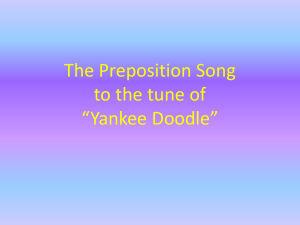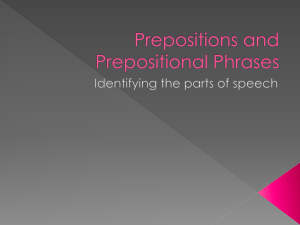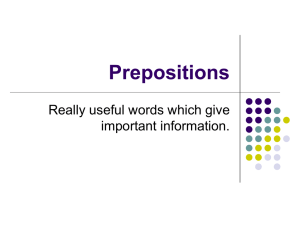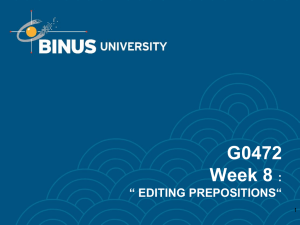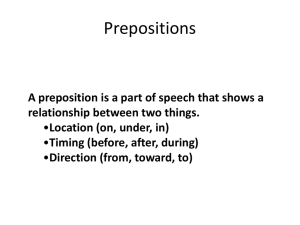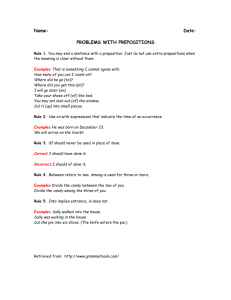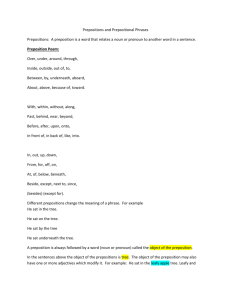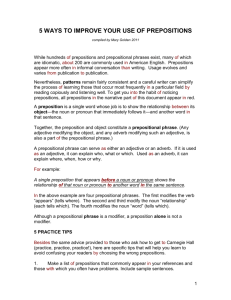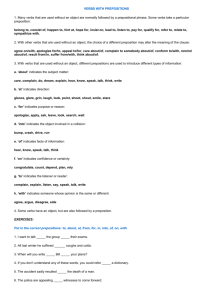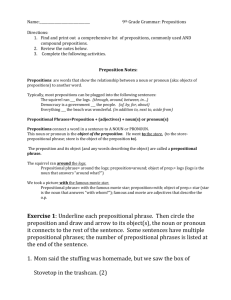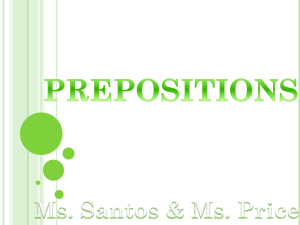THE ACADEMIC SUPPORT CENTER
advertisement
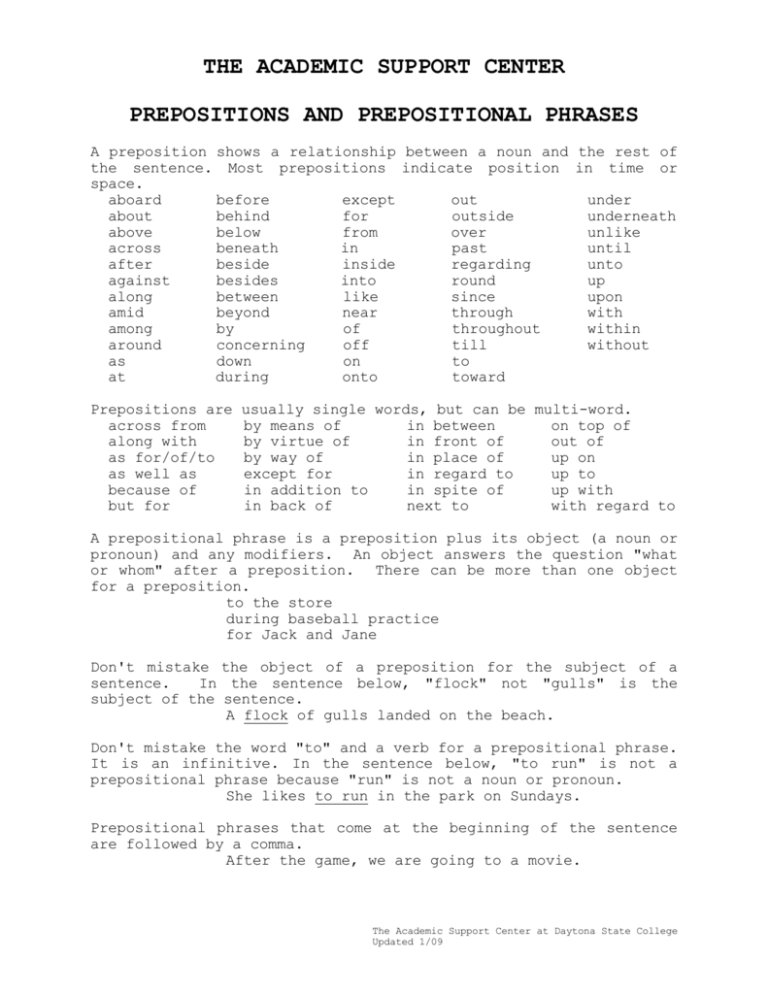
THE ACADEMIC SUPPORT CENTER PREPOSITIONS AND PREPOSITIONAL PHRASES A preposition shows a relationship between a noun and the rest of the sentence. Most prepositions indicate position in time or space. aboard before except out under about behind for outside underneath above below from over unlike across beneath in past until after beside inside regarding unto against besides into round up along between like since upon amid beyond near through with among by of throughout within around concerning off till without as down on to at during onto toward Prepositions are across from along with as for/of/to as well as because of but for usually single words, but can be multi-word. by means of in between on top of by virtue of in front of out of by way of in place of up on except for in regard to up to in addition to in spite of up with in back of next to with regard to A prepositional phrase is a preposition plus its object (a noun or pronoun) and any modifiers. An object answers the question "what or whom" after a preposition. There can be more than one object for a preposition. to the store during baseball practice for Jack and Jane Don't mistake the object of a preposition for the subject of a sentence. In the sentence below, "flock" not "gulls" is the subject of the sentence. A flock of gulls landed on the beach. Don't mistake the word "to" and a verb for a prepositional phrase. It is an infinitive. In the sentence below, "to run" is not a prepositional phrase because "run" is not a noun or pronoun. She likes to run in the park on Sundays. Prepositional phrases that come at the beginning of the sentence are followed by a comma. After the game, we are going to a movie. The Academic Support Center at Daytona State College Updated 1/09 THE ACADEMIC SUPPORT CENTER PREPOSITION USAGE There are many customary ways prepositions are used in English. For example, some words are paired with specific prepositions. according to afraid of allergic to angry with consistent with consisting of depressed about disturbed by familiar with happy about hostile to interested in nervous about sad about sorry for worried about When verbs are paired with prepositions, they are called two-word verbs or phrasals. Many of these are idiomatic expressions that are used in casual speech, not in formal writing. ask out break down break up bring out bring up burn down burn up call off call up clean up clear up cut down cut off cut out cut up drop in drop off drop out fill in fill out fill up get up give in give up go out go over grow up hand in hand out hang up help out keep on keep up leave out look into look out make up pick out pick up point out put on put out run into run out set up sign in take off take out take over try on turn off turn up wake up wear out Prepositions also can be paired to describe distance or time. They drove from Chicago to Tulsa from 6:00 AM to noon. Sheila has to work from 6:00 AM until 3:00 PM. Specific prepositions are used to describe time. On Monday, you must be here at 8:00 AM. Our ship sails at dawn on January 24. During the summer, we mow the grass in the morning. Melissa will begin classes in the fall. I was born in 1958 in the Twentieth Century. Americans prospered during the Industrial Revolution. Specific prepositions are used with addresses. They used to live in France. Did he live in California? They live on Mulberry Street. The hospital is at 446 Dixie Trail in Lake City. Some prepositions also serve as subordinating conjunctions (the keywords that begin dependent clauses). Instead of an object, the word is followed by a subject and verb. After the game, they went to a movie. (preposition) After they left the game, they went home. (sub. conjunction) We had to wait until dinner. (preposition) We had to wait until Frank cooked dinner. (sub. conjunction)
